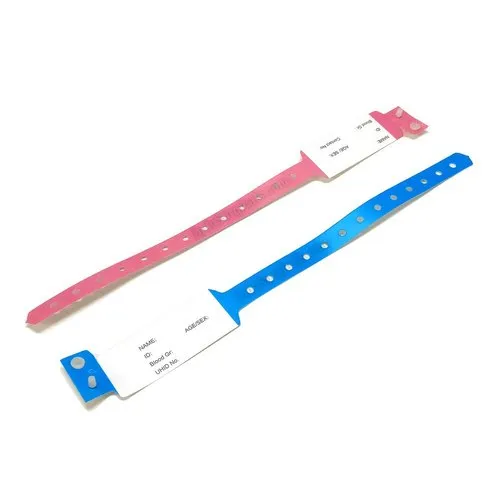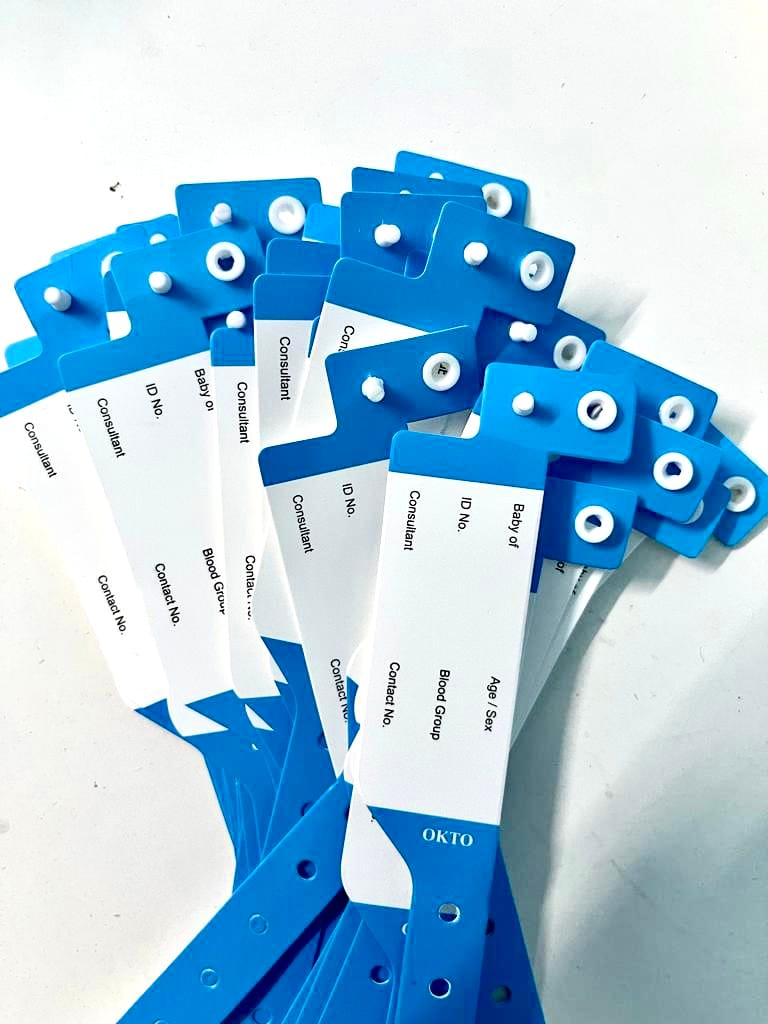Enhancing Safety: The Value of Patient Recognition Bands in Medical Care
In the world of medical care, the effectiveness of patient identification bands can not be overemphasized, as they offer as a basic secure against misidentification and succeeding mistakes. As we check out the multifaceted function of these bands, it becomes apparent that their value prolongs beyond mere identification, increasing concerns about best techniques and future technologies in person safety and security.
Summary of Person Recognition Bands
Individual identification bands play a critical function in ensuring the safety and precision of individual care in medical care settings. These bands, normally used on the wrist or ankle, offer as a vital device for verifying individual identification, thereby lessening the threat of mistakes in treatment, medicine administration, and other medical care procedures. Made from resilient products, client identification bands typically consist of crucial info such as the person's name, date of birth, clinical record number, and barcodes or QR codes for scanning.
The execution of client identification bands is crucial in different medical care atmospheres, including hospitals, outpatient centers, and lasting treatment organizations. They add to an organized method in person administration, making it possible for medical care specialists to quickly and accurately determine people, especially in high-pressure circumstances where quick decision-making is crucial.
Furthermore, making use of these bands is lined up with regulative requirements targeted at boosting person safety and security - Patient Identification Band. By ensuring that each person's details is quickly verifiable and readily available, health care companies can preserve a high requirement of treatment, minimize the incidence of negative occasions, and cultivate a society of security within healthcare establishments
Benefits of Accurate Recognition
Exact recognition is essential to improving patient security and care high quality in health care settings. It works as the initial line of protection versus mistakes that might bring about adverse person end results. By making certain that each individual is properly determined through reliable methods, such as individual identification bands, doctor can dramatically decrease the danger of misidentification, which can cause unsuitable treatments, medication mistakes, and also medical mix-ups.
In addition, precise patient recognition assists in reliable interaction among medical care teams. When all personnel can constantly identify individuals, they can share crucial information more successfully, resulting in far better coordination of treatment. This is specifically crucial in emergency scenarios where prompt treatments are important.
In addition, accurate recognition sustains compliance with governing requirements, thus reducing the danger of lawful repercussions for medical care centers. It fosters depend on in between people and health care companies, as patients feel much more protected understanding that their identifications are being guarded.

Usual Challenges Faced
Making certain efficient person identification in medical care settings presents a variety of challenges that can endanger safety and security and care high quality. One substantial challenge is the irregularity in patient populations. Patients might arrive in a state of complication or distress, making accurate recognition difficult. Furthermore, language barriers can prevent effective interaction, making complex the verification procedure.
One more difficulty is the dependence on human factors look at this now in identification procedures. Healthcare specialists might inadvertently forget or misinterpret recognition protocols, specifically in high-stress environments such as emergency divisions. This can bring about mistakes, including the management of inaccurate therapies or medicines.
Technological problems also posture challenges. Although electronic health document (EHR) systems are made to enhance client identification, system blackouts or individual errors can interfere with the procedure. The physical design of person ID bands can lead to readability issues, especially in cases where bands are damaged or covered.
Last but not least, irregular training amongst team pertaining to identification protocols can cause voids in expertise and method. Addressing these obstacles is vital for improving individual security and making certain that identification bands offer their intended purpose successfully.
Best Practices for Application
To efficiently execute patient recognition bands in health care setups, organizations have to embrace a complex strategy that focuses on standardization, training, and modern technology assimilation. Standardization includes establishing clear procedures for the design, application, and use of recognition bands across all divisions. This ensures uniformity and minimizes the danger of errors connected to variations in band why not look here types or labeling methods.


Training is important for all healthcare team to guarantee they comprehend the value of accurate client identification, how to effectively read and use identification bands, and the treatments to comply with in instance of discrepancies. Regular workshops and correspondence course can reinforce this understanding and advertise a culture of safety.
Innovation assimilation plays a pivotal role in enhancing the performance of client identification bands. Making use of barcode scanning or RFID technology can enhance the recognition process, allowing for real-time verification of client identities. In addition, digital wellness document systems should be configured to consist of signals for mismatches in between the recognition band and patient data.
Future Trends in Individual Safety And Security
As healthcare continues to advance, the emphasis on individual safety is likely to intensify, driven by advancements in modern technology and a better understanding of systemic threats. Emerging patterns show a change towards even more incorporated systems that utilize information analytics, man-made intelligence, and artificial intelligence to enhance patient recognition procedures. These innovations can help identify potential safety and security concerns before they escalate, thus reducing mistakes connected with misidentification.
Moreover, the application of blockchain technology might revolutionize just how patient data is firmly shared amongst healthcare companies, making certain that identification bands are current and constantly accurate. This will certainly not just boost client safety however also assist in smooth communication throughout multidisciplinary groups.

On top of that, the expanding focus on tailored medicine is expected to affect person safety and security methods. By including genetic and group details into recognition systems, medical care professionals can tailor therapies more properly, reducing the threats of negative reactions as a result of misidentification.
Conclusion
In verdict, patient identification bands offer as a vital component in boosting safety within health care settings. By promoting precise person recognition, these bands substantially decrease the danger of errors connected with misidentification, unacceptable treatments, and drug management. In spite of obstacles in execution, adherence to ideal methods and the integration of emerging modern technologies can even more boost their performance. Ultimately, the ongoing emphasis on durable recognition procedures will add to enhanced client results and general safety and security in health care setups.
In the realm of health care, the efficacy of individual identification bands can not be overemphasized, as they serve as a basic safeguard versus misidentification and subsequent errors.Patient identification bands play an essential duty in guaranteeing the safety and security and accuracy of individual care in health care setups. Made from sturdy materials, client recognition bands often consist of vital details such as the client's name, day of birth, clinical record number, and barcodes or QR codes for scanning.
By making sure that each person is correctly recognized via reliable ways, such as client recognition bands, healthcare suppliers can significantly reduce the threat of misidentification, which can lead to inappropriate therapies, medicine mistakes, and also surgical mix-ups.
In verdict, client see this identification bands offer as a vital component in boosting safety and security within healthcare settings. Patient Identification Band.